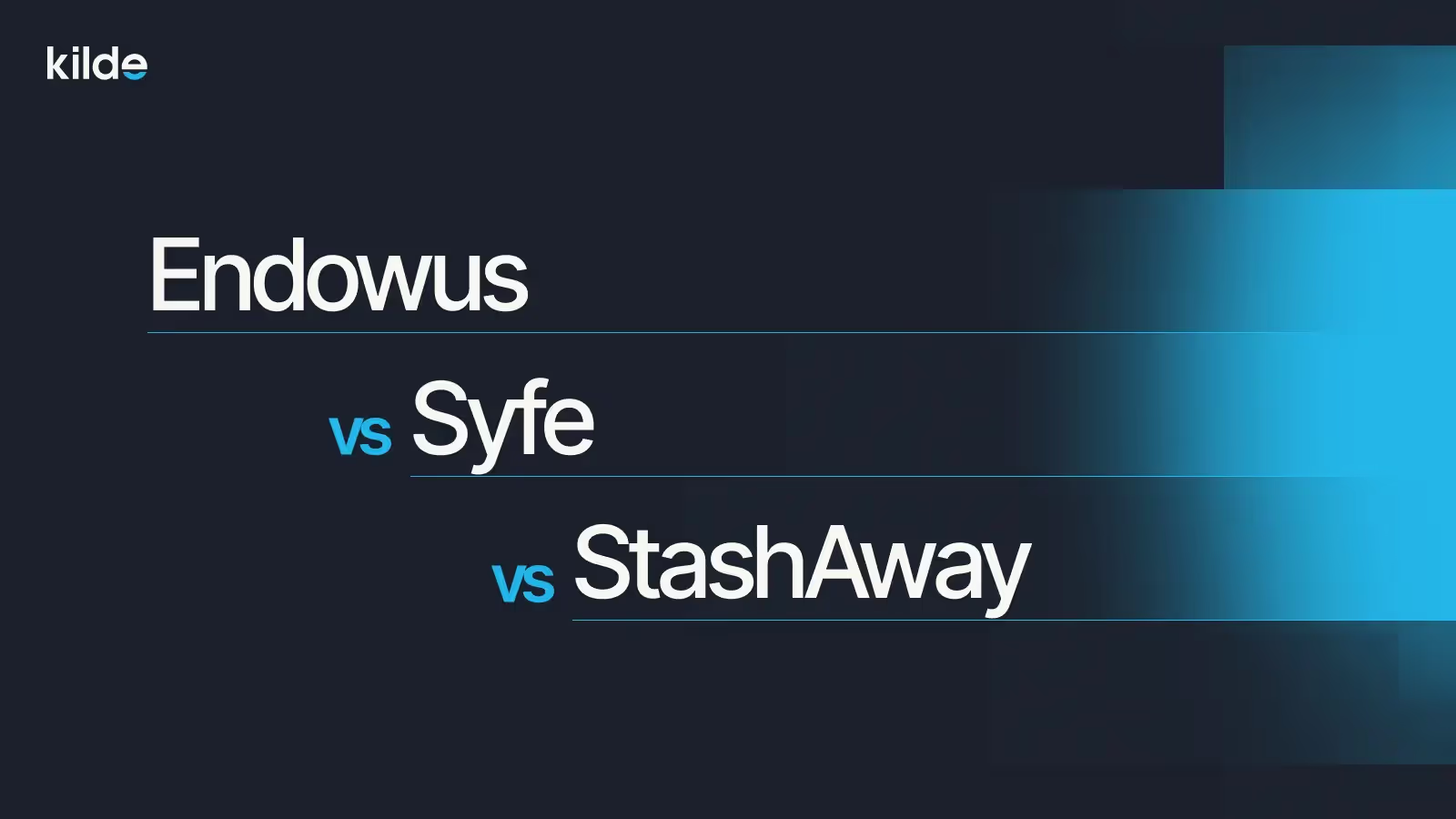This article is designed to provide you with in-depth insights into the CPF Retirement Sum Topping-Up Scheme (RSTU). You will learn how you can leverage this scheme to achieve dual financial objectives: reducing your taxable income now, and building a secure nest egg for your retirement years.
How the CPF Retirement Sum Topping-Up Scheme Works
In Singapore, the CPF Retirement Sum Topping-Up Scheme (RSTU) lets you top up your own or someone else's CPF accounts. These contributions can reduce your taxable income for the year.
{{cta-component}}
How RSTU Works
You can top up your own CPF account to lower your overall taxable income. In addition, you will also be able to top up your parents’ or spouse’s CPF account, which can both lower your taxable income and also help them to secure their retirement.
You can make top ups to the CPF SA (Special Account), CPF MA (MediSave Account), and CPF RA (Retirement Account).
For more information on how you can optimise your CPF returns, read our full guide on "CPF Investment Scheme (CPFIS): How To Use It To Generate High Income".
CPF Top-Up Methods That Give You Income Tax Relief
You can significantly reduce your taxable income through two primary methods. Firstly, you have the option to make contributions to your parents' or spouse's CPF Retirement Account (RA) or Special Account (SA). Additionally, you can also choose to top up your own CPF MediSave Account (CPF MA) or CPF SA. By utilizing both of these strategies, you can potentially benefit from a combined income tax relief of up to $16,000.
Topping Up Your Parents' or Spouse's CPF Retirement Account (RA) or Special Account (SA)
This is a win-win situation. By topping up your parents' or spouse's CPF accounts, you are helping them grow their retirement savings and also reducing your own taxable income. You can enjoy up to $8,000 of tax relief in each calendar year via top ups to your loved one’s CPF accounts.
Tax Relief Amounts for Topping Up Others' Accounts
Topping Up Your Own CPF MediSave Account (CPF MA) or CPF SA
You can also top up your own CPF accounts to get the tax relief. The key here is that you must have maxed out the CPF contribution ceiling for your employment income. You will be able to enjoy up to $8,000 of tax relief in each calendar via top ups to your own CPF account.
Pros & Cons of the CPF Retirement Sum Topping-Up Scheme
When considering using the CPF Retirement Sum Topping-Up Scheme (RSTU) to reduce your income tax and plan for retirement, it is crucial to weigh the pros and cons. Below are some advantages and disadvantages to help you make an informed decision.
Pros
- Lower taxable income for you and your family
One of the immediate benefits of making a CPF top-up is the reduction in your taxable income. This not only applies to you but can also extend to your family members if you choose to top up their accounts as well. By effectively reducing your taxable income, you get to enjoy tax relief, translating to financial savings.
- Better retirement planning
The RSTU allows you to contribute extra amounts to your Special Account (SA) or Retirement Account (RA), which accumulate over time with interest. This can greatly enhance your financial security during your retirement years.
- Fixed interest rates on CPF accounts are generally higher than bank savings accounts
CPF accounts generally offer a fixed interest rate that is usually higher than what most traditional bank savings accounts provide. This ensures that your contributions grow steadily over time, offering a safe and reliable investment option, which will allow you to live comfortably in retirement.
Cons
- Locked-in till retirement age
One significant downside is that these top-up amounts are locked in until you reach the official retirement age. This limits the liquidity of your funds, making them unavailable for any other investment opportunities or emergency needs. Hence, consider additional contributions carefully, and ensure that you have sufficient funds saved up for unexpected expenses.
- Limits on maximum contributions
There are maximum limits on how much you can top-up each year, both for individual and family accounts. These limits can restrict the extent to which you can leverage this scheme for tax benefits.
Perhaps you are interested in buying Singapore shares? Our article "How to Buy Stocks or Shares in Singapore? A Complete Guide to Investing in Singapore" will help you make successful investments.
{{cta-component}}
There Is A Limit For CPF Cash Top-Ups
It is important to recognize that there are limitations to how much you can contribute to the Central Provident Fund (CPF) under the Retirement Sum Topping-Up Scheme for the purpose of receiving tax relief. Contribution caps are imposed by the CPF Board to ensure equitable distribution of tax benefits. These limitations can vary depending on the type of CPF account—SA, RA, or MA—and are subject to periodic revisions.
The maximum amount you could top up to your own or someone else's Special Account (SA) or Retirement Account (RA) under the Retirement Sum Topping-Up Scheme (RSTU) was up to the current Full Retirement Sum (FRS), which is $186,000. Note that the FRS is subject to change annually.
For the CPF MediSave Account (MA), the contribution is capped at the MediSave Contribution Ceiling, which is $63,000.
For obtaining tax relief, the maximum top-up amount eligible for tax relief under the RSTU is $8,000 per calendar year when you top up for yourself, and an additional $8,000 per calendar year when you top up for your family members (parents, grandparents, spouse, and siblings).
Apply For CPF RSTU Online
Should you decide to proceed with the CPF Retirement Sum Topping-Up Scheme, the application process has been made highly convenient through online platforms. To initiate a top-up, simply log into your CPF account via the CPF website. Once logged in, the platform provides an intuitive and easy-to-follow guide to complete the top-up transaction.
Final Thoughts
In conclusion, the Central Provident Fund (CPF) Retirement Sum Topping-Up Scheme offers a multifaceted approach to financial planning. Not only does it allow for a reduction in your taxable income, but it also serves as a robust mechanism for securing your retirement funds. The scheme's online accessibility further adds to its convenience.
When fine-tuning your investment portfolio, lookbeyond traditional assets. Consider innovative opportunities like Kilde, which specializes in securitizing alternative assets into private securities. They offer licensed, transparent, and quality investment options, including private debt, real estate debt, and venture debt.
What sets Kilde apart is its focus on meticulously analysed investments, offering remarkable returns of up to 13.5*% per annum.
{{cta-component}}
Kilde serves as an intermediary between private debt investors and lending firms, thereby opening avenues to a vibrant and growing market often overlooked by traditional investors. It is this focused approach that allows both seasoned and novice investors to tap into a high-growth, high-return market with a level of security and transparency.
Therefore, a comprehensive approach to financial management must integrate both tax planning measures, such as CPF top-ups, and diverse investment strategies. By incorporating alternative investments like those offered by Kilde, you not only open up streams for short-term gains but also solidify your long-term financial security.
The following offers an analysis into the difference between putting your money towards CPF top-ups and investing in private debt via Kilde.
Source:
*KILDE PTE LTD (“Kilde”) is incorporated in Singapore (registration no. 201929587K) is licenced and regulated by the Monetary Authority Singapore and holds a Capital Markets Services Licence (CMS101016) and an Exempted Financial Advisor License under the Financial Adviser Act. The information provided in this marketing material is intended for “accredited investors” and “institutional investors” (collectively “qualified persons”) only. This marketing material, and any information in this marketing material, or any documentation that Kilde provides in relation to this marketing material is provided without any representation or any kind of warranties whatsoever (whether express or implied by law).
This advertisement has not been reviewed by the Monetary Authority of Singapore.
















